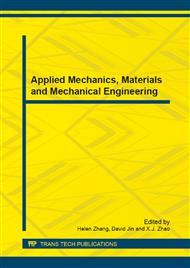[1]
SUN Jun. Discussion on some key technical issues for design and construction of undersea tunnels, J. Chinese Journal of Rock Mechanics and Engineering, 2006, 25(8): 1 513–1 521. (in Chinese).
Google Scholar
[2]
Kuesel T R. Alternative concepts for undersea tunnels, J. Tunneling and Underground Space Technology, 1986, 1(1): 283-287.
DOI: 10.1016/0886-7798(86)90009-x
Google Scholar
[3]
WANG Yanning, XIONG Gang. Application and state of the art of immersed tube tunnels, J. Modern Tunnelling Technology, 2007, 44(4): 1–4. (in Chinese).
Google Scholar
[4]
Glerum A. Developments in immersed tunnelling in Holland, J. Tunnelling and Underground Space Technology, 1995, 4(10): 455-462.
DOI: 10.1016/0886-7798(95)00031-s
Google Scholar
[5]
Zhan D X, Wang X Q. Experiments of hydrodynamics and stability of immersed tube tunnel on transportation and immersing, J. Journal of Hydrodynamics, 2001, 2(13): 121-126.
Google Scholar
[6]
Zhou Y,Tan J H,Yang J M, et al. Experimental investigation on element immersing process of immersed tube tunnel, J. China Ocean Engineering, 2001, 4(15): 531-540.
Google Scholar
[7]
ZHANG Qinghe, GAO Weiping. The stress research of Immersed tube tunnel in different working conditions, J. Engineering Mechanics, 2003(Supp. 1): 301-305. (in Chinese).
Google Scholar
[8]
Yakhot V, Orszag S A. Renormalization group analysis of turbulent 1. basic theory, J. Journal of Scientific Computing, 1986, 1(4): 3-5.
Google Scholar
[9]
Yakhot V, Orszag S A. Development of turbulent models for shear flows by a double expansion technique, J. Phys Fluid A, 1992, 7(4): 15-19.
Google Scholar
[10]
Patankar S V. Numerical Heat Transfer and Fluid Flow. M, New York: Hemisphere Publishing Corporation, (1979).
Google Scholar
[11]
Rodi W. Turbulence Models and Their Application in Hydromechanics: Experimental and Mathematical Fluid Dynamics. M. Delft: IAHR Section on Fundamentals of DivisionⅡ, (1980).
Google Scholar


